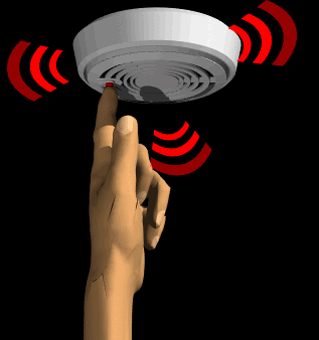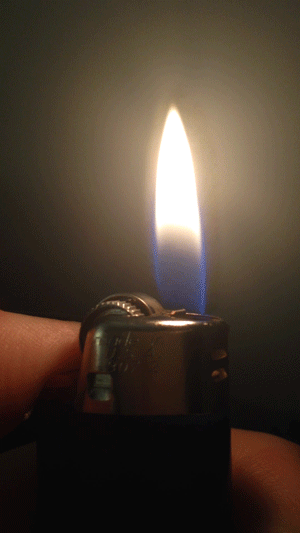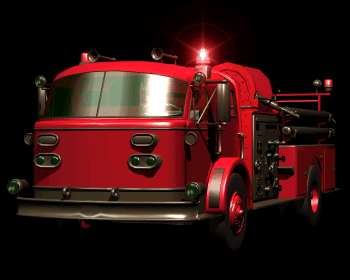top of page
IF YOU HAVE AN EMERGENCY!
"CALL 9-1-1"

Automatic Location Identification:
The 9-1-1 computer will automatically identify the location where the call has originated from.
When a caller does not know their location or has a problem communicating, emergency assistance can be dispatched to the location of the call.


What If your Home Catches on Fire?


As with other things, the best motto is "Be Prepared!"
So Plan Your Exit!
Prepare a floor plan of your home showing at least two ways out of each room, and review it with your family on a regular basis.

Sleep with your bedroom door closed. In the event of fire, it helps to hold back heat and smoke. But if a door feels hot, do not open it, escape through another door or window.
Easy-to-use window escape ladders are available through many catalogues and outlet stores. For instance, First Alert sells one for around $90.
Agree on a fixed location out-of-doors where family members are to gather for a head count.
Stay together away from the fire. Call 911 from another location. Make certain that no one goes back inside the burning building. Check corridors and stairways to make sure they are free of obstructions and combustibles.
To help cut down on the need for an emergency exit in the first place, clear all unnecessary items from the attic, basement, garage, and closets.


If a fire should occur in your home:


1. Get out of the house!
Familiarize yourself with at least two exits from each room, for example, one window and one door. Know where the exits are, practice using them.
2. Have a meeting place located outside of the house!
A fire is no time to be worrying about who made it out and who did not. By establishing a central meeting place outside the house, you can count heads and not have to wonder who might still be inside.
3. Call 9-1-1 from a neighbors house or from a cell phone!
4. Never go back inside for any reason!
Once you are outside, do not go back inside. The fire department will be there in a matter of minutes. Stay at the meeting place and wait for the fire department.



In a Fire, Seconds Count!



For early detection of fires, install smoke detectors near your sleeping areas. If you have a multi-story house, install smoke detectors at each level in the home.
Design a home fire escape plan; practice using it.
Establishing "Exit Drills In The Home" (E.D.I.T.H.) will insure that everyone in the home will be familiar with the proper procedures should a fire occur.
If you have sleeping areas located on the second floor, provide an escape ladder or rope. Check these carefully to make certain they are safe.
Check windows that would be used in an escape to see that they open easily.
Should you be caught in smoke, CRAWL! Smoke rises, so stay close to the floor where the air will be less toxic.
Clothing, should it ignite, will burn rapidly. If your clothes ignite, DO NOT RUN...STOP, DROP, AND ROLL!
REMEMBER, THE BEST STEP TO TAKE IS TO PREVENT FIRES FROM OCCURRING!
Knowing what to do should fire occur is very important. More important still is the prevention of a fire. Take the time to inspect your home for possible safety hazards, bare wires, and improperly operating heating equipment.
Fire prevention is something the entire family may participate in. Encourage children to assist with checking the home for hazards.
By taking the time to carefully inspect your home twice a year for possible hazards, you may prevent a major catastrophe later on.
Home Safety!

SMOKE ALARMS: are lifesavers, but only if they work!
Your fire department reminds you to test your smoke alarms each month by pushing the alarm test button. If you have difficulty reaching your alarms, use a broom handle or a cane to gently press the test button for 30 seconds. If the alarm doesn't sound, replace the battery or the alarm immediately.
CARBON MONOXIDE DETECTOR (CO):
Carbon monoxide is a colorless, odorless, tasteless and toxic gas produced as a by-product of combustion.
Any fuel burning appliance, vehicle, tool or other device has the potential to produce dangerous levels of carbon monoxide gas. Examples of carbon monoxide producing devices commonly in use around the home include:

Fuel fired furnaces (non-electric), Gas water heaters , Fireplaces, woodstoves, Gas stoves , Gas dryers , Charcoal grills , Lawnmowers,, snowblowers and Automobiles.
The Consumer Products Safety Commission (CPSC) reports that approximately 200 people per year are killed by accidental CO poisoning with an additional 5000 people injured. These deaths and injuries are typically caused by improperly used or malfunctioning equipment aggravated by improvements in building construction which limit the amount of fresh air flowing in to homes and other structures.
While regular maintenance and inspection of gas burning equipment in the home can minimize the potential for exposure to CO gas, the possibility for some type of sudden failure resulting in a potentially life threatening build up of gas always exists.

FIRE EXTINGUISHERS: They remain your best bet if you're on the spot when a fire begins. Fire extinguishers should be mounted in the kitchen, garage, and workshop. Purchase an ABC type extinguisher for extinguishing all types of fires. Learn how to use your fire extinguisher before there is an emergency. Remember, use an extinguisher on small fires only. If there is a large fire, get out immediately and call 911 from another location.
CANDLES: Over the past few years, the use of candles in the home has greatly increased, and so has the number of fires caused by their misuse. The fire department offers the following tips for the safe use of candles.
Secure your candles in sturdy holders and, if possible, place glass chimneys or shades over them. Keep lit candles out of reach of children and pets, and well away from any combustible materials. An unattended candle is an invitation to disaster, so don't forget to snuff out your candles before leaving the room or going to bed.
.jpg)

FIREPLACES: Remember, you're deliberately bringing fire into your home; respect it. Use a fireplace screen to prevent sparks from flying. Don't store newspapers, kindling, or matches near the fireplace or have an exposed rug or
wooden floor right in front of the fireplace. Have your chimney inspected by a professional prior to the start of every heating season and cleaned to remove combustible creosote build-up if necessary. Install a chimney spark arrester to prevent roof fires. When lighting a gas fireplace, strike your match first, then turn on the gas.
SMOKING: If you actually believe that you're immune from cancer, heart disease, emphysema, and other illnesses, at least worry about burning to death. Never smoke in bed. Don't smoke when you are drinking or are abnormally tired. Use large, deep ashtrays, and empty them frequently. Never dump an ashtray into the trash without wetting the butts and ashes first.


LIGHTERS AND MATCHES: Remember to keep all matches and lighters out of the sight and reach of children. One-fourth of all fire-deaths of children are from fires started by children. Keep lighters and matches out of the reach of children. Never leave children unattended with fire or space heaters. Children are naturally curious about fire, so keep an eye on them. But if a child repeatedly plays with fire or seems to have a morbid fascination with fire, seek professional help at once. If youngsters live with you or stay overnight occasionally, be sure that they know how to escape from every room and are part of your emergency exit plan.
GASOLINE AND OTHER FLAMMABLE LIQUIDS:
Those cans aren't painted red just for the fun of it! Flammable liquids should be stored only in approved safety containers, and the containers should be kept outside the house and garage in a separate storage shed.

Gas up lawn equipment and snowthrowers outside, away from enclosed areas and any source of sparks or heat. Start the equipment 10 feet from where you filled it with fuel. Don't fill a hot lawn mower, snowthrower, or other motor, let it cool first. Never clean floors or do other general cleaning with gasoline or flammable liquids.
"Safety Starts with you!"
bottom of page

.jpg)
